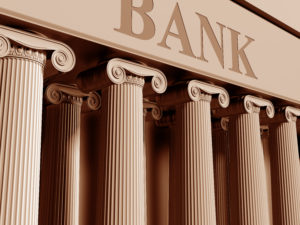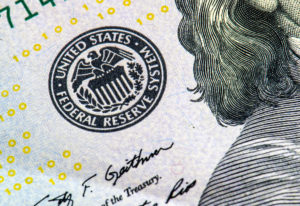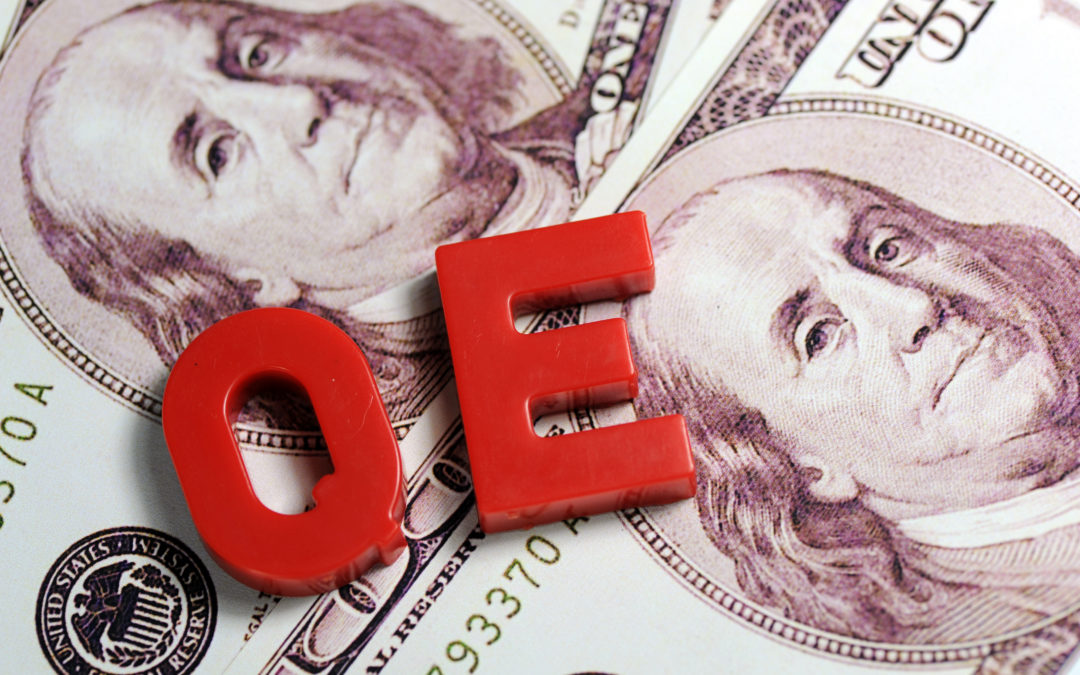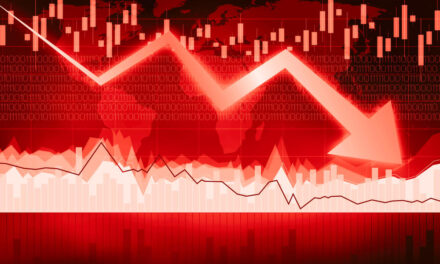It is a term that sounds more difficult to understand than it really is, but quantitative easing, more frequently known as QE, is actually a pretty simple — and common and controversial — concept to explain.
Sometimes markets can use a bit of a kickstart and that’s where QE comes into play.
It’s a concept that is new in its roots — especially in the United States — but one that central banks can use to help spur investment and lending.
“QE also might be a tool central banks continue to use for years to come,” Banyan Hill Publishing analyst Michael Carr said. “A recent study shows interest rates have been in a downtrend since the 1300s so we may be in a period when rates remain at low levels for decades.”
Now, let’s look at just what is quantitative easing.
What is Quantitative Easing?
Sometimes you may read in the media that a central bank, like the U.S. Federal Reserve or Bank of England, is printing money to lend to banks so those banks can lend to the economy.
Well, that’s not really true.
 In essence, central banks purchase things like government bonds, T-Bills and government notes from various companies like pension funds or even insurance companies. Those purchases are funded from the creation of new reserves — what banks use to pay each other.
In essence, central banks purchase things like government bonds, T-Bills and government notes from various companies like pension funds or even insurance companies. Those purchases are funded from the creation of new reserves — what banks use to pay each other.
The fund would sell the bonds to the Federal Reserve and that fund, or bank, has a new deposit at the Federal Reserve, thus giving that bank more money to lend.
This is called quantitative easing.
“Typically, QE occurs in unconventional circumstances, when short-term nominal interest rates are very low, zero or even negative,” former St. Louis Fed Vice President and economist Stephen Williamson wrote in an article for “The Regional Economist.”
It basically increases the supply of money which, just like increasing the supply of any asset, lowers the cost of the asset.
One of the theories behind QE is that it flattens out the yield curve — where long-term bonds have a higher yield than short-term ones.
QE often leads to lower interest rates, allowing your bank to lend money with easier terms.
That, in simple terms, helps answer the question: What is quantitative easing?
A History of Quantitative Easing
According to InflationData.org, the Bank of Japan started the process of quantitative easing back in 2001. It maintained the policy until 2006.
 The U.S. Federal Reserve took on QE for the first time from 2008-2014, adding nearly $2 trillion to the money supply in the U.S.
The U.S. Federal Reserve took on QE for the first time from 2008-2014, adding nearly $2 trillion to the money supply in the U.S.
The Bank of England also implemented a QE strategy in 2009 to help combat a recession. It dropped interest rates to 0.5% and purchased approximately £200 billion (about $261 billion), or 14% of GDP.
The bank did it again in 2016 to help with concerns over Brexit and to keep interest rates down.
In January 2015, the European Central Bank first used QE after several years using austerity measures — like increasing taxes to increase government revenue or even lowering taxes while lowering spending at the same time.
The ECB purchased €60 billion worth of bonds to lower the value of the euro and increase exports. The program ended in December 2018.
In March 2020, the Federal Reserve launched new programs aimed at stabilizing the economy under its quantitative easing policy. The Fed made an open-ended commitment to buy assets, including corporate bonds. The move came after the Fed announced it was buying $500 billion in Treasurys and $200 billion in mortgage-backed securities.
Understanding the history of quantitative easing helps understand what QE is.
Why Quantitative Easing Can Be Bad
Employing the QE policy doesn’t always produce positive outcomes, and the method is controversial.
 One big negative to quantitative easing is inflation — a decrease in the purchasing power of a nation’s currency.
One big negative to quantitative easing is inflation — a decrease in the purchasing power of a nation’s currency.
Central banks, like the Federal Reserve, cannot force their member banks to increase lending. Nor can they force borrowers to borrow more money.
For example, while the Federal Reserve’s policy of QE worked on most accounts, member banks did not lend out as much money as the Fed would have liked. Instead, banks used the funds to increase their stock buybacks and dividends.
In Japan — where QE was first used to combat deflation — the goal was to hit 2% inflation in two years. Unfortunately, QE only raised inflation temporarily and had little impact overall through 2017.
So while QE has been used for various reasons by various central banks, its results have been mixed.
“QE was intended to be the equivalent of dropping money out of a helicopter, a strategy once mentioned by former Fed Chairman Ben Bernanke. While a helicopter drop could increase consumer spending, QE seems to have spurred investment,” Carr said. “Banks and others selling bonds to the Fed seemed to put the money into the stock market, and that helps explain a spectacular rise in global stocks.”
The important thing, however, is to have a base understanding as to just what is quantitative easing.
Related:
- Fed Floats New ‘Stealthy’ Version of Controversial Quantitative Easing
- Trump Calls on Fed to Cut Rates, Resume Quantitative Easing
- Op-Ed: QE Is a Heady Drug for Politicians and Their Enablers at the Fed
- Everything’s a Bubble: Dallas Fed Chief Kaplan Admits Fed is Inflating Assets
- Credit Suisse Warns Fed Will Start ‘QE4’ by Year’s End as Reserves Dry Up
- Ron Paul: Is the ‘Mother of All Bubbles’ About to Pop?
- Dr. Doom Roubini to Central Banks: Stop Printing Money
- Celente: Fed’s ‘Monetary Methodone’ Causing ‘The Greatest Depression’
- Peter Schiff: QE Is Monetary ‘Roach Motel’ for the Fed
- Fed Starts Bond Buying as Economy Slow. Is QE4 Here?





